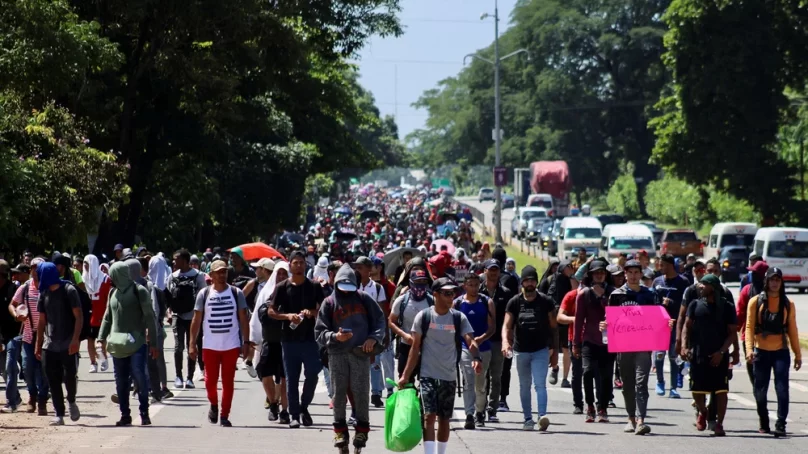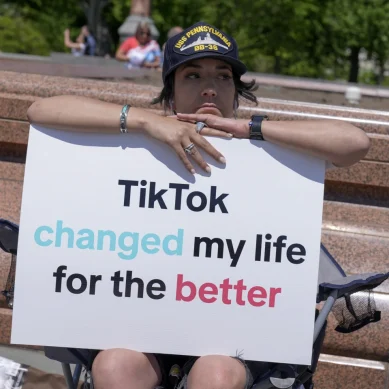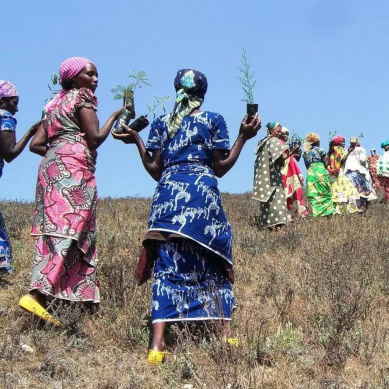
The vast majority of the six million Venezuelans who have escaped poverty, insecurity, and economic collapse in their homeland since 2015 have tried to start new lives in South America. But two years after Covid-19 led governments to close borders and enforce quarantines, many are discovering that the region is becoming a less welcoming place.
Due to greater barriers to entry in countries like Chile and Peru, difficulty in finding work in Colombia, and rising xenophobia just about everywhere, some have had enough and are heading north to Mexico and the United States. But overland journeys through Central America are perilous, and an uncertain future awaits.
“The number of people leaving Venezuela in the first six months of 2022 has been stable, with an increase in the number of people going north,” Ilaria Rápido from R4V, an online platform coordinated by the UN’s refugee and migration agencies, said.
“Some people are leaving Venezuela for the first time, but others have been living elsewhere for several years in other countries, especially in South America, without possibilities of integration and where the impact of the pandemic left them with no choice but to move to other countries.”
Marianne Menjivar, director of the Venezuelan response at the International Rescue Committee (IRC), said that Covid-19 has been a “game-changer” in many host countries where Venezuelans seek a fresh start.
“Public health services are not even available for nationals, let alone migrants and refugees,” Menjivar explained. “If you need a family planning device inserted, you can’t even get an appointment. Everything has become so overwhelmed and overstretched.”
In many countries, this combination of growing economic hardship and shrinking government resources has also fed into populist and xenophobic discourse, sometimes inciting violence.
Women, who make up at least half the Venezuelan migrant population in main host countries Colombia and Peru, are vulnerable to gender-based violence along migration routes and where they settle – a situation exposed in a new report published this week by Amnesty International.
Amnesty said both countries are failing to provide adequate protection for the women, who often face physical and sexual violence at home, but also exploitation at work, including being co-opted into sexual exploitation.
In spite of high levels of under-reporting, GBV cases rose 71 per cent between 2018 and 2021 in Colombia, and 31 per cent in Peru for the same period.
Diego Chaves-González, senior manager of the Migration Policy Institute’s Latin America and Caribbean Initiative, called urgently for better policy coordination among authorities at local, national, and regional levels to improve the deteriorating situation for Venezuelan migrants.
“This is a crucial moment for Latin America where levels of xenophobia are spiking and where it’s becoming increasingly difficult to create policies for integration of migrants,” he said. “This can develop into a social time bomb where I don’t know what the effects will be.”
At well above 1.8 million, direct neighbour Colombia hosts more Venezuelans than any other country. In 2021, it also emerged as a critical transit country for migrants and asylum seekers, not only regionally from Cuba and Haiti, but also from Africa, the Middle East and beyond.
Along with thousands of Venezuelans, most were making their way through the dangerous Darién Gap into Central America in the hope of reaching the United States overland.
Resurgent violence involving drug gangs and armed groups despite a landmark peace agreement in 2016, and rising poverty due to the pandemic, mean the needs of Venezuelan migrants must compete for attention with Colombia’s own internal crises. The UN’s emergency aid coordination body, OCHA, estimates that 7.7 million people in Colombia – not including the Venezuelans – are in need of humanitarian assistance.
The economic impacts of Covid-19 left migrants, who earned on average 30 per cent less than Colombians before the pandemic, even more vulnerable to job losses. Unable to pay rent and often lacking a legal migration status, many made the reverse journey home after the health crisis struck.
This changed, however, in April 2021, when Colombia granted Venezuelan applicants a 10-year residency status – a Temporary Protection Permit or PPT – allowing them to work legally and access social services, including healthcare and education. The programme is open to anyone who entered the country legally after January 2021. Applications can be submitted until November 2023.
Clara Gamizdeluna, deputy programmes director in Colombia for the International Rescue Committee, hailed the initiative, which has already delivered more than one million permits to migrants, as a “great effort… to integrate Venezuelans”.
However, she acknowledged that many public and private institutions have yet to recognise the new document, while health services remain limited, meaning a lot of Venezuelans with PPTs aren’t being allowed to work and still lack access to education and healthcare.
There are also estimated to be at least 162,000 caminantes – migrants travelling by foot across the country in search of opportunities – in Colombia. They are not covered by the PPT programme and are the most at risk to extortion, exploitation and violence.
Incoming President-elect Gustavo Petro, the country’s first leftist leader, has said he will re-open the border with Venezuela when he assumes office on August 7. It’s unclear what broader effect that might have on migration, but it’s likely to leave fewer Venezuelans falling prey to criminal gangs and smugglers on dangerous illegal routes.
Many Venezuelans end up in informal settlements in dangerous, gang-ridden border areas, where they struggle to integrate properly and find work. Those making for the cities face growing competition for jobs against a backdrop of rising inequality, inflation and violence, made worse by the war in the Ukraine, which has driven up food and fuel costs.
Claudia López, the influential mayor of Bogotá, stoked rising xenophobia recently when she proposed the creation of a dedicated “migrant criminal” police force.
Peru, the second most popular destination country for Venezuelans, at 1.3 million, has seen the sharpest increase in arrivals in South America, up some 50 percent since 2020. It had been one of the region’s fastest-growing economies but suffered the highest death rate globally from Covid-19, and has experienced a sharp rise in poverty after imposing severe lockdowns.
- The New Humanitarian report










